A whole book on Opus Anglicanum! An instruction book and a project book. Gosh! If you’re a lover of historical needlework, what more could you want?
Today, I thought I’d show you this new book on Opus Anglicanum by Tanya Bentham. It’s a practical guide the historical techniques of early English embroidery, and it is a fabulous book!
First, we’ll chat a bit about Opus Anglicanum and then delve into the book.
Come along…
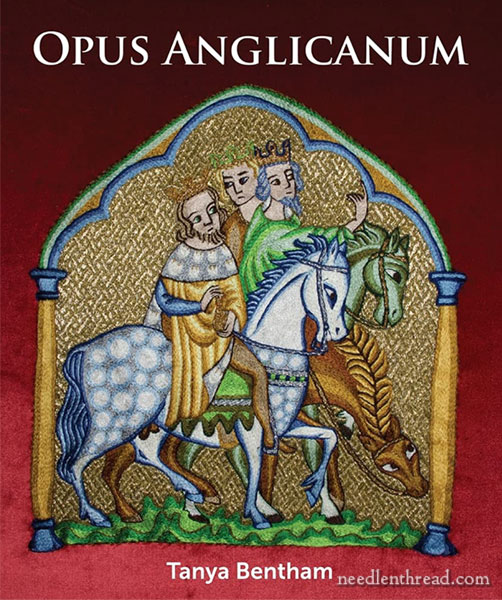
Opus Anglicanum (or “English work”) is the name given to the style of embroidery that developed in the Middle Ages and was predominantly mastered by the English. This isn’t surprising – England, Scotland, and Ireland were the seat and seed of art and culture in the west after the collapse of the Roman Empire and into the early middle ages.
Opus Anglicanum involves predominantly two types of stitching: split stitch (with silk) and couching – most specifically, undersided couching.
The early examples especially of Opus Anglicanum feature a unique style in its figures. If you are familiar with medieval illumination, you’ll recognize the look, although in embroidery, the “look” is even more pronounced.
The features on the figures are distinct. In the embroidered images, you’ll find large eyes and sometimes, seemingly disproportioned hands or feet. Figures are clothed in vivid colors, in robes shaded with split stitch.
Besides reflecting the style of art contemporary with the age, the exaggerated features and the boldness of the figures had a purpose. Like all religious art of the time, the embroidery told a story – and in order to “read” the story on embroidered pieces, you had to be able to see it from a distance.
The expression on a face is generally found first in the eyes, and the direction of the eyes tells us where a figure is looking – or maybe tells us where we should be looking to “read” the story. So the eyes were big. Hands and feet, which are the instruments of “doing” or indicating, are large. From a distance, figures were recognized by their symbolic accoutrements, by their expressions, and by what they were doing, looking at, or pointing towards – and their stories were told through gestures and expression.
There is something about the figures of early Opus Anglicanum that is appealing and timeless, even if we recognize them as belonging to a very specific age in history.
One of the great tragedies of needlework history is the fact that so many examples of Opus Anglicanum were destroyed during the 16th century. But the works and the records that still exist indicate that the skills required for Opus Anglicanum were mastered by the English embroiderers to such an extent that their work was appreciated all over Europe. Opus Anglicanum and the embroidered works that stemmed from the style profoundly influenced the development of embroidery throughout Europe, well into the Renaissance and beyond. It is a style of embroidery and art that deserves study.
And here we arrive at the book!
In her book, Tanya Bentham has given us a very practical guide to learning and working this type of embroidery.
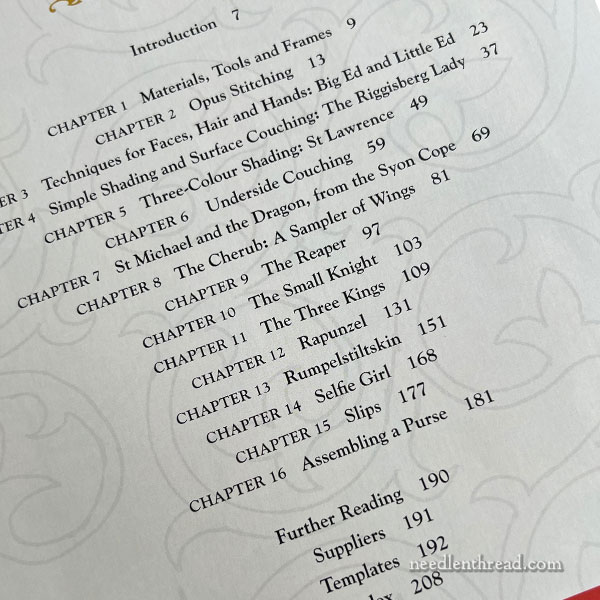
The book is divided into materials, general instructions, and projects. There are quite a few projects in the book that take the stitcher from simpler to more complex, in order to really learn the techniques and how to apply them in a design.
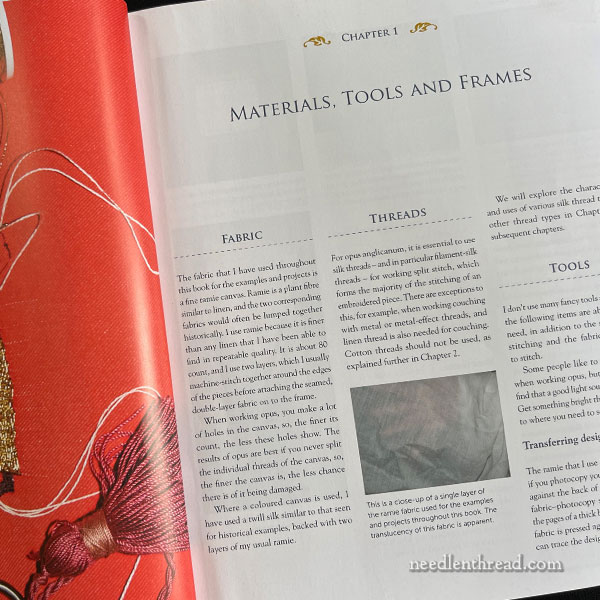
There’s not a vast array of materials needed for this type of embroidery. The thread of choice for the embroidery is flat filament silk. Tanya explains and demonstrates why this is so. Hint: it has to do with the play of light on the thread! You simply can’t get the same light play from cotton threads or from highly twisted threads.
If you’re unfamiliar with filament silk and flat silk, I’ve got a few articles about flat filament silks here on Needle ‘n Thread. This one would serve as a good introduction. There are plenty of links in there for further reading, too.
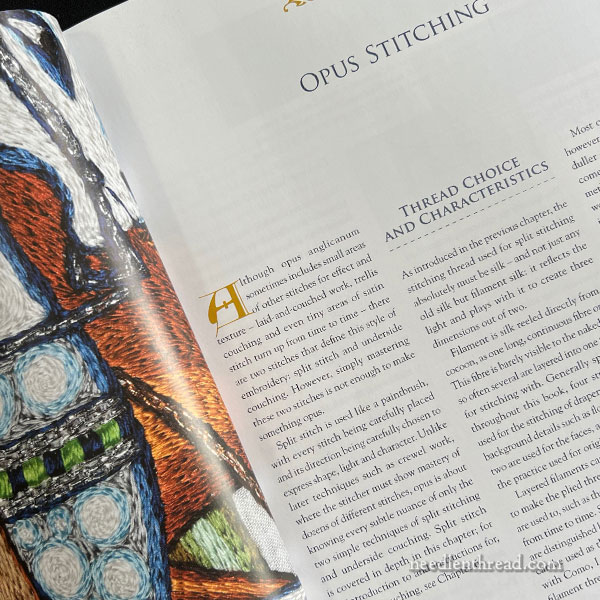
I think chapter 2, on Opus Stitching, is a really thorough chapter on the threads and stitches used in Opus Anglicanum. Split stitch is the star of this particular show.
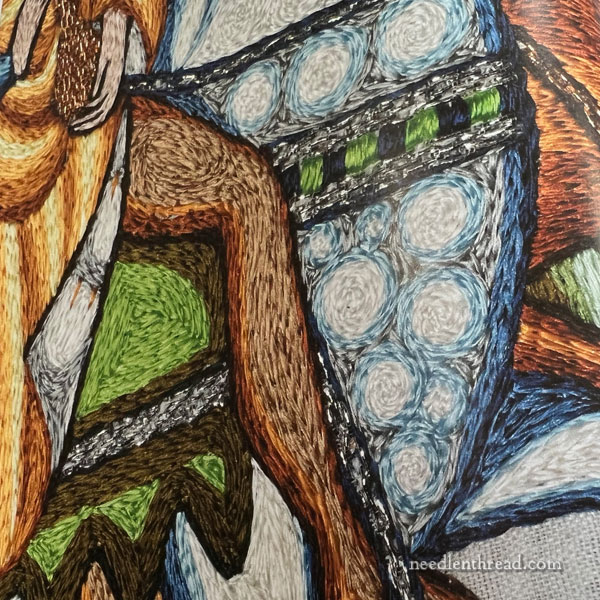
You’ll find a lot of lovely images of Tanya’s work throughout the book.
I’m partial to the close-ups.
One thing you’ll notice is that the stitching always has “movement” to it – the lines of stitching in Opus Anglicanum flow certain ways for a reason. It’s all bound up in the way the light plays on threads.
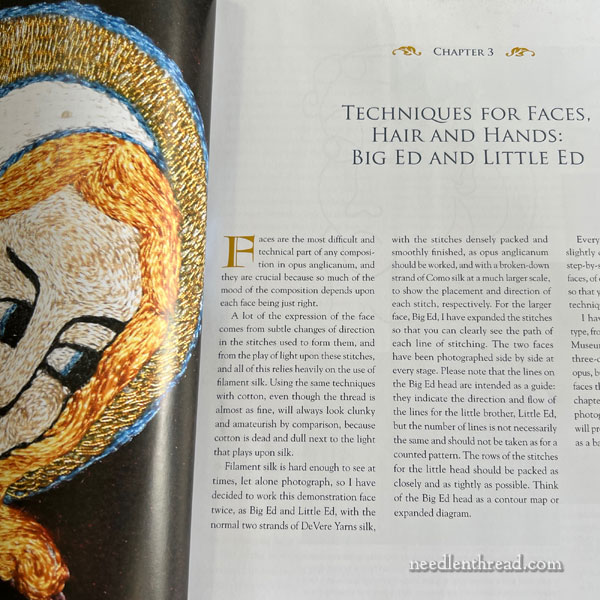
Tanya spends a good chapter on faces, hair, and hands. Big Ed and Little Ed are fabulous teaching tools for this chapter – well conceived, well done when it comes to instruction here.
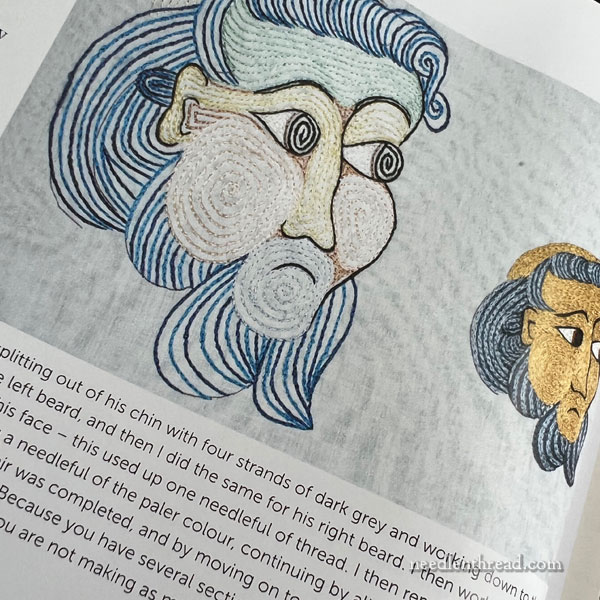
She uses an enlarged and ensmalled version of a head (Big Ed and Little Ed) to demonstrate the flow of stitching in Opus Anglicanum.
Big Ed essentially stretches out the paths that the embroidery takes when stitching a face and hair. It really is a well-done exercise and brilliant demonstration.
The flow of stitching in Opus Anglicanum is important to the whole style, so this chapter is a gem.
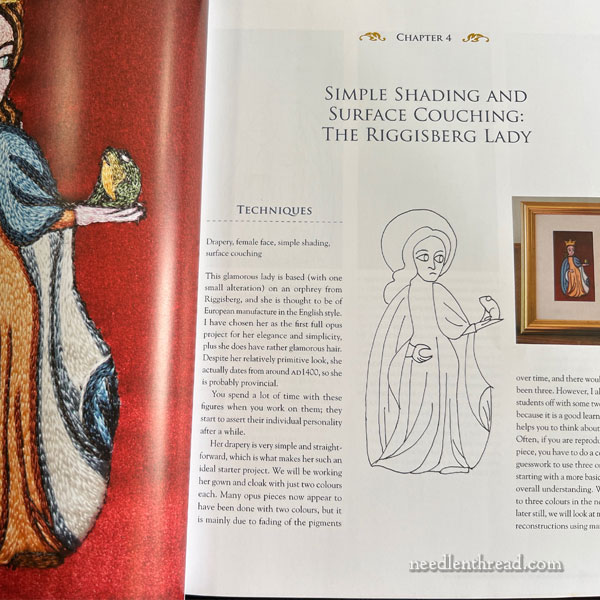
Through different small projects, Tanya takes the stitcher through the different concepts to master, starting with simple shading, and then moving forward in future projects to more complex shading.
Love the frog!

This is probably the only small glitch for me in the book. Most people probably wouldn’t notice it, or perhaps wouldn’t care. But I have a Thing for symbolism in art.
And just to come to the defense of poor overlooked St. Stephen…
This project – on three-color shading – is titled St. Lawrence.
In early Christian art, symbolism plays a dominant role. It goes back to that whole question of story-telling. The items that a figure holds or the setting around the figure contribute to the figure’s story, which is told not only for the edification of those reading the story, but also to hand down the story for future generations.
Tanya mentions that St. Lawrence was grilled to death and suggests that perhaps the little egg-shaped items this fellow is holding must be coals. In fact, they are rocks, because it is isn’t St. Lawrence (who is almost always depicted holding a grill or in the vicinity of a grill). It is St. Stephen, who is almost always depicted holding, or in the vicinity of, rocks, because he was stoned to death.
Here are the two of them in Christie’s Early English Embroidery:

St. Lawrence is on the left, telling us his story about the grill; St. Stephen is on the right, telling us his story about the rocks. Notice, too, that he has a tonsure (the bare top of the head). The figure is tonsured because St. Stephen was a deacon. He is, in fact, the patron saint of deacons and stonemasons.
Like I said, symbolism is a Thing for me. I think it’s important. If we change the symbols, eventually we change the story – and it isn’t our story to change. So I’m kind of nitpicky about that kind of thing.
Regardless, the project is a wonderful demonstration on taking shading further, with three-tone shading.
Tanya clarifies that shading in Opus Anglicanum is done in these “blocks” of fewer shades rather than the many gradual shade changes which we see in later styles of embroidery.
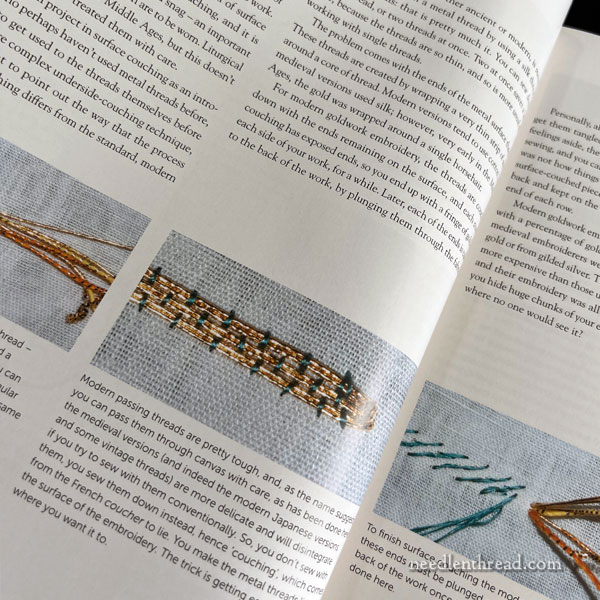
There is, by the way, much information on undersides couching, and many excellent step-by-step photo instructions to help the reader master the techniques and become proficient at it.
You’ll learn a lot about stitch length and positioning, as well as spacing, starting and ending threads, and, as the projects progress, working patterned backgrounds.
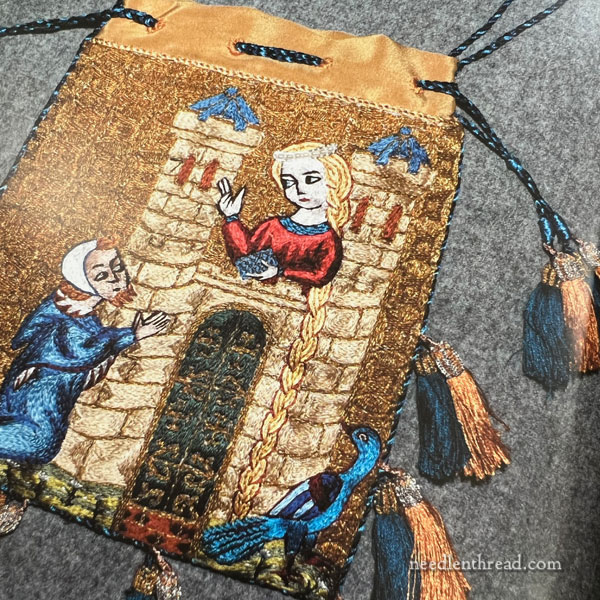
There are lots of projects in the book! And there are some suggestions for finishing (aside from framed pieces). I like this piece, depicting the story of Rapunzel, constructed as a bag.
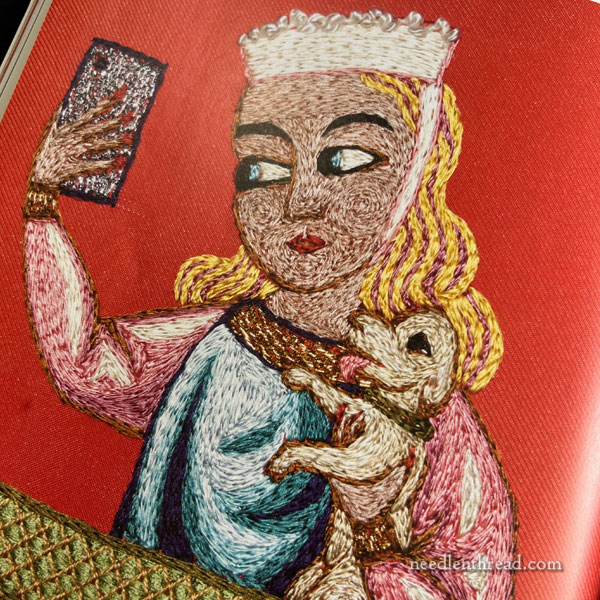
And yes, you can update Opus Anglicanum and bring it into the 21st Century! Selfie-girl is a hilarious example of just that, embodying the whole look of OA, but updated in subject matter. This is great!
In a Nutshell
What a fabulous book! It’s full of detailed, good instruction and fantastic projects that show us that Opus Anglican can be just as relevant today as it was a thousand years ago.
Tanya’s writing is easy to read. Her instructions – accompanied by many step-by-step photos – are accessible and easy to absorb.
I love the way the projects go from simple to more complex, so that you can learn and improve as you work through the book.
Not just for the historical embroiderer, Opus Anglicanum is an excellent instructional and project book.
Where to Find It
The book hasn’t been released in the US yet (it is slotted for next spring some time), so if you want it now, I’d suggest picking it up here through Book Depository. The price is significantly better, too.
This article contains affiliate links to book sources, which means that Needle ‘n Thread receives a small commission for purchases made through those links at no extra cost to you.